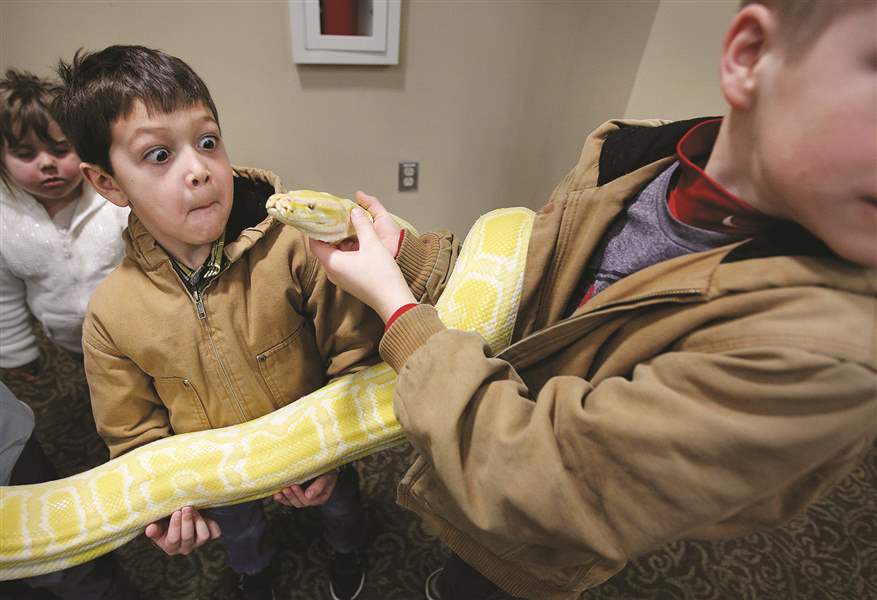
Toledo Magazine: What are you afraid of?
Survey shows top 10 phobias are ‘pretty typical’
10/16/2016
33 percent of those surveyed are afraid of reptiles.
ASSOCIATED PRESS
More than a third of everyone reading this story is terrified of snakes.
Slightly less than that among you gentle readers get anxious just thinking about speaking to a large group.
And if that speaking engagement is atop a rickety wooden bridge over a large chasm, with a menagerie of spiders and insects crawling around, more than 20 percent of you would consider jumping into the river below — that is, if you weren’t so afraid of drowning ... or crocodiles.

A Chapman University study found that 27 percent of those surveyed are afraid of heights.
Reptiles, public speaking, heights, water/drowning, and insects/spiders are the usual suspects when rattling off common fears. Not surprisingly, they are also Americans’ most prevalent personal anxieties, according to a 2015 Chapman University survey of 1,541 adults nationwide.
Rounding out the top 10 phobia list is claustrophobia at No. 6, needles and blood, germs/whooping cough/measles, flying, and ghosts.
Jason Levin, an assistant professor of psychology and psychiatry at the University of Toledo and a clinical psychologist, wasn’t surprised by what made the list.
“It’s pretty typical,” he said, as are the roots of most phobias. “It’s some sort of environmental stimulus or something physical in someone’s environment that may interact with someone’s history or experience with that stimulus.”
Ophidiophobia (the fear of snakes), for example, likely originates after a snake bite or another negative experience with the reptiles; perhaps as a child you were overzealously warned of the dangers of poisonous snakes by someone with ophidiophobia.
Glossophobia (the fear of public speaking), then, could also originate from a negative experience, such as a failed podium presentation in front of peers. It could also derive not from what happened but what could happen; the potential fallout from a bad public speech, including public humiliation and even ridicule.
Phobias such as these are not necessarily irrational, either, Mr. Levin said, depending on the probability of something bad happening and its engendered response.
“It’s proportional to the probability of something bad happening that would be considered irrational,” he said.
Panicking at the library after turning a magazine page and finding an unexpected photo of a snake staring at you is not rational. Developing a fear of snakes while living on an island swarming with cobras, however, is rational. It’s also likely to be helpful for one’s survival, which is why being afraid is part of our DNA.
“Fear to some extent is an evolutionary adaptation,” he said. “It is good to have some sort of hesitancy or to be leery.
“I could see where it makes sense to be uncomfortable around needles or people who are sick ... it just depends on the severity or degree of their anxiety.”
As President Franklin Roosevelt famously said, “The only thing we have to fear is fear itself.”
For those with phobophobia — the fear of fear — that’s plenty enough.
Contact Kirk Baird at kbaird@theblade.com or 419-724-6734.